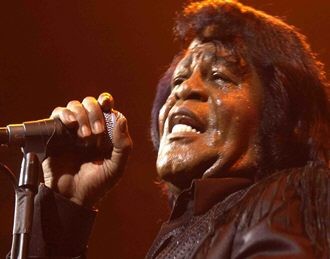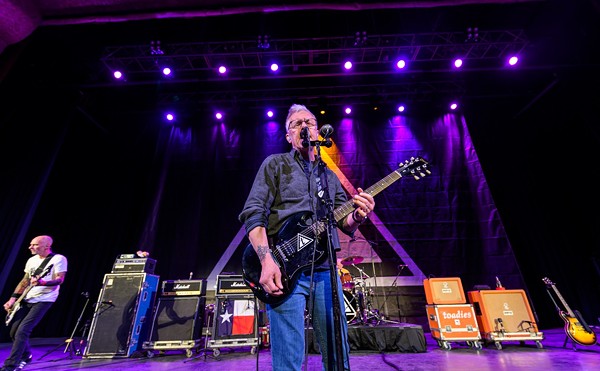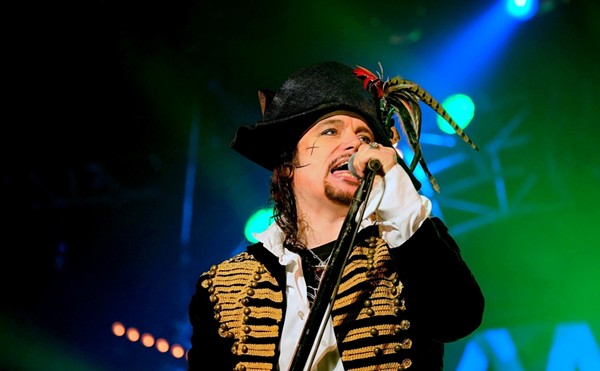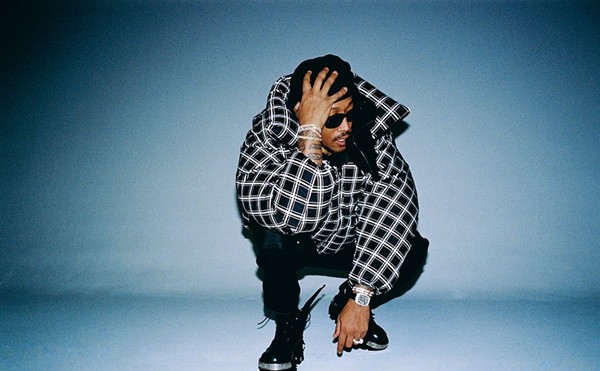When Elvis Presley died on August 16, 1977, the major television networks preempted their usual late-night programming in favor of serious, comprehensive reviews of Presley’s career and cultural impact. When James Brown died last week, Entertainment Tonight devoted two minutes to a feature about James Brown’s weeping widow being locked out of her home. They saw fit to mention Brown’s passing after dutifully updating us on the holiday skiing vacations of every two-bit celebrity in the Western world.
In death, as in life, Mr. “Please Please Please” failed to get the respect he deserved. By any reasonable reckoning, Brown was an infinitely more important musical figure than Presley, and while Presley’s commercial success put him in a zone of his own, Brown also boasted some staggering chart numbers: 114 R&B hits, 94 pop hits, 44 records that cracked Billboard’s Top 40.
For some reason, however, Brown was always relegated to the chitlin circuit of America’s collective consciousness: universally known, much parodied, fondly regarded, but rarely granted the requisite importance demanded by his work. It’s telling that most commentators who’ve discussed him in recent days have referred to him as an “entertainer” or a “showman,” rather than an artist, which he unquestionably was.
Because no one exerted a greater influence on American music over the last half-century, it’s also tempting to define Brown by the impact he had on succeeding generations, to suggest that we should care about him because he taught Mick Jagger how to do a second-rate impression of Brown’s moves. It’s an unavoidable subject, because you can hear Brown in everyone from the Ohio Players to KC and the Sunshine Band. You can see how profoundly he shaped Prince and Michael Jackson, the two biggest male pop stars of the ’80s (Prince eventually hired sax master Maceo Parker, one of Brown’s greatest sidemen). And you can spot an endless number of hip-hop-era samples of Brown’s work. One track, “Funky Drummer,” provided a groove for songs by both Public Enemy and Sinead O’Connor.
But, ultimately, it’s a lazy form of critical shorthand to view musicians as important because they influenced younger artists. This line of thinking leads to all kinds of idiotic theories, such as the one promulgated a few years ago by critic Jim DeRogatis that Kraftwerk was more important than the Beatles, because Kraftwerk had a stronger impact on contemporary music. Does that mean that Kenny G is more significant than Charles Mingus?
Duke Ellington isn’t important because Wynton Marsalis likes him, he’s important because he left behind an astounding body of work. The same applies to Brown. From 1960 to 1974, he was a near-constant chart presence and a restless innovator who untuitively sensed, and even anticipated, the tenor of the times.
It’s hard to think of any other American performer who single-handedly transformed our sense of rhythm, but Brown did it several times. With “Papa’s Got a Brand New Bag,” he introduced the notion of the guitar as a percussion instrument, playing clipped, staccato rhythms while the band enhanced the groove with precisely created open spaces. Five years later, with “Get Up (I Feel Like Being a) Sex Machine,” he perfected the concept of funk as a one-chord, on-the-one vamp. As Bootsy Collins, who played bass on the latter track later put it, Brown “had the tightest band in the land,” and he worked that large ensemble like a perfectly integrated machine.
For all his visionary breakthroughs, Brown also shamelessly repeated himself. “Papa’s Got a Brand New Bag” was essentially the previous year’s “Out of Sight” with different words. And he worked the “Sex Machine” formula through a series of similar chant-songs that included “Mother Popcorn”, “Give It Up Or Turnit Loose”, and “Make It Funky (Part 1)”. And it was always sad in later years to see a worse-for-the-wear Brown respond to the prompting of interviewers by exclaiming, “I feel good!”, seemingly surrendering to the erroneous assumption that he was some kind of one-hit wonder.
As the inventor of his form, however, Brown executed it with greater intensity and rhythmic complexity than any of his disciples, at least until the mid-’70s, when disco’s rise dispirited him and rendered his groove passé. Check out any clip of Brown performing from the early ’60s to the mid-’70s, and you’re unlikely to find a single one that isn’t scintillating. Before launching his musical career, Brown had focused his ambitions on boxing and baseball, and his furious dancing was an athletic display as powerful as anything delivered on the football field by his famous namesake, Cleveland Browns running back Jim Brown.
One of my favorite clips comes from 1974, the twilight of his heyday. Brown appears on Soul Train, eager to establish his relevance to the funk generation he fathered. Decked out in skin-tight black leather, with a hipster’s cap peeking over his eyes, Brown rips into a long medley of “Papa Don’t Take No Mess” and “My Thang.” By this point, Brown is well into his 40s, yet he effortlessly incorporates all the new Soul Train dance moves into his arsenal. At the end of “My Thang,” he jumps into the crowd of dancers, who form an admiring circle around him. They aren’t caught up in his legend, they aren’t in awe at the thought of being so close to musical royalty. They just think he’s a hot dancer, and they want to watch him cut loose.
That might have been the best compliment Brown ever received.
















